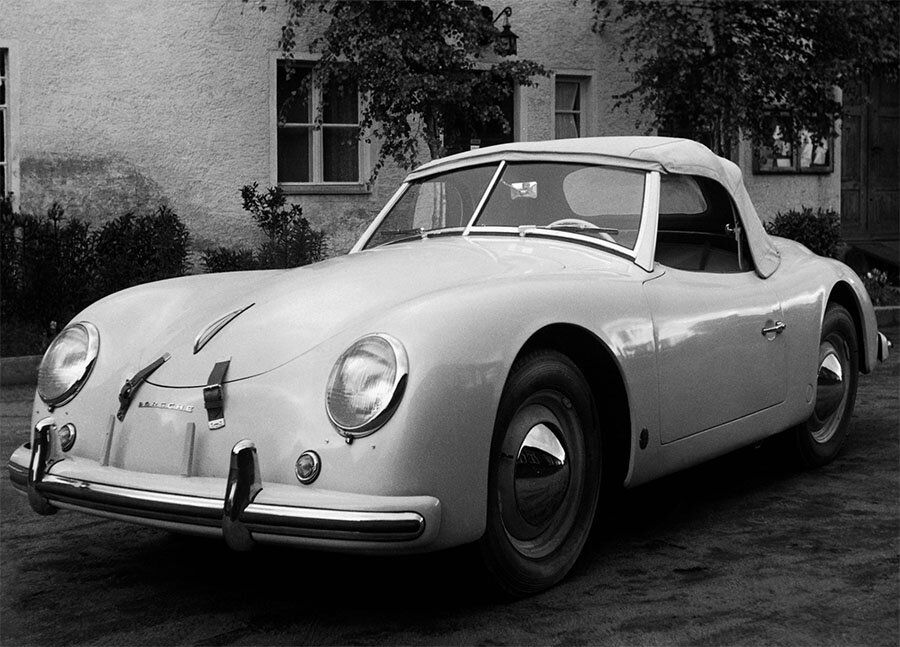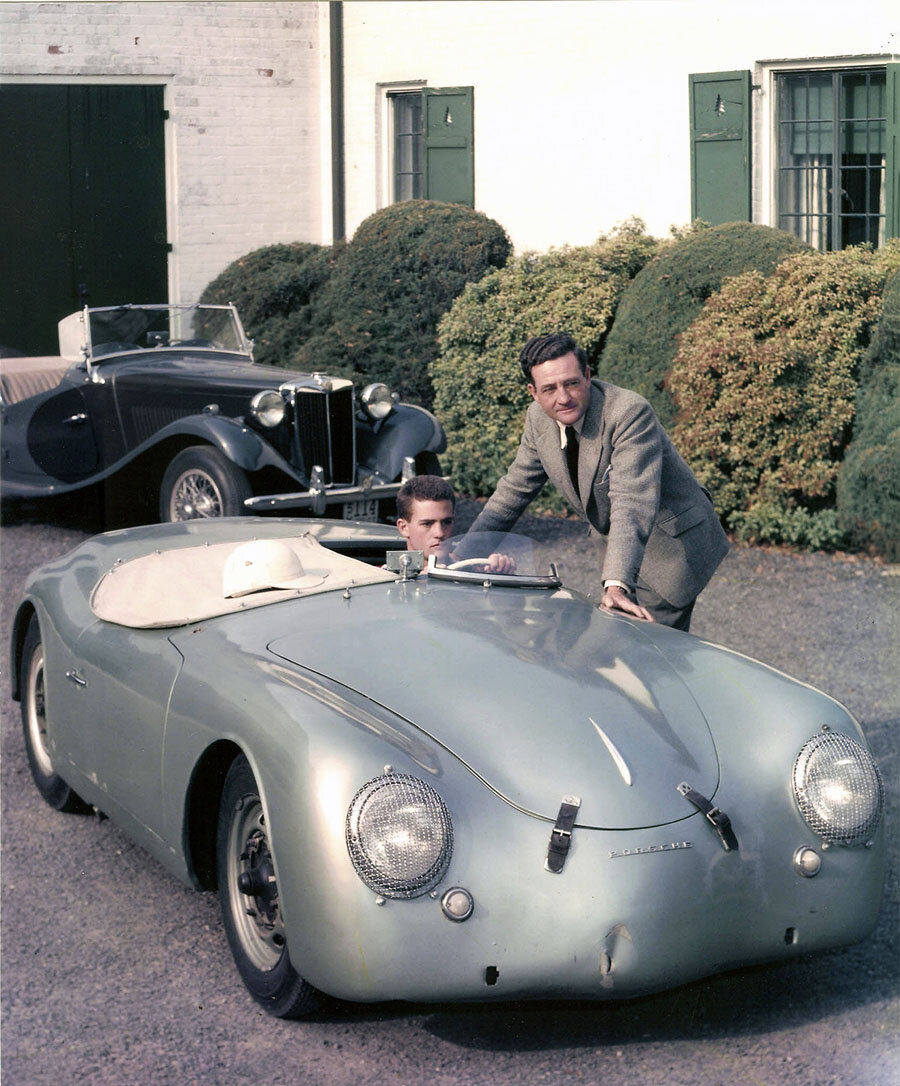Guide: Porsche 356 America Roadster - a Historical & Technical Appraisal
/BACKGROUND
At the Paris Motor Show in October 1950, Porsche management held a meeting with American car dealer, Max Hoffman. Hoffman was already the Volkswagen and Jaguar distributor for North America and, following the Paris encounter, he became the Porsche concessionaire too.
The US market was central to Porsche’s early success and Hoffman was regarded as something of a visionary back in Stuttgart.
In early 1952, he requested a pared down 356-based car for weekend racers. Hoffman wanted something with a lightweight aluminium body, top specification engine and no frills interior.
Porsche reluctantly agreed and the 356 Type 540 America Roadster became the first instance of an outside market dictating a Porsche product.
While the standard 356 floorpan and engines could be utilised for the new car, a coachbuilder to manufacture a small run of aluminium bodies would have to be sought.
Porsche decided to commission Glaser Karosserie in Dresden for the job.
In addition to a small batch of aluminium bodies for the America Roadster, Glaser were also contracted to build 250 Cabriolet shells for the regular 356. Porsche’s usual body builder, Reutter (who only worked in steel), were already flat out so it likely seemed prudent to bring in some extra help to meet demand.
BODYWORK
Although at first glance the America Roadster resembled any other 356 of the era, there were a multitude of subtle differences.
It featured a distinct hump-backed appearance, simplified detachable two-piece windscreen and lowered doors.
The rear quarters were intricately curved and the engine cover was moved further up than on the standard car.
A rudimentary hood was supplied, but the America Roadster was not created to be a practical all-weather sports car; Porsche did not even supply side windows.
Most examples came with leather retaining straps for the front lid. Bumpers with overriders were also usually fitted.
Like the 356, the America Roadster was designed by Erwin Komenda. As mentioned, it was uniquely fabricated from lightweight aluminium whereas series production variants wore steel bodies.
Customers that wanted to race their cars could save around 50kg by removing the windscreen, hub caps, hood, jack, spare wheel and boot lining.
INTERIOR
Interiors were generally equipped to the most basic specification.
Metal dashboards did without any superfluous upholstery and were painted to match the body.
A large speedometer and rev counter were located directly behind the Petri three-spoke steering. A smaller combined oil temperature / oil pressure gauge was positioned off to the left.
Bucket seats were upholstered in hard-wearing fabric or leather. Simplified door panels were trimmed to match.
The seats were split by an exposed gear mechanism topped off with a faux ivory gear knob to match the steering wheel and switchgear.
Indicators, seat belts, floor mats, wipers, side mirrors and even exterior door handles were all optional extras. Customers could also request a centrally mounted clock.
CHASSIS
Each America Roadster was based on a standard steel 356 Cabriolet floorpan.
Suspension was fully independent via transverse torsion bars and trailing arms with additional swing axles at the rear. Telescopic dampers were fitted all round.
The hydraulic 230mm drum brakes were supplied by Lockheed.
3.25-inch wide wheels were ventilated to assist brake cooling.
A standard 52-litre fuel tank was located under the front lid along with a spare wheel and battery.
ENGINE / TRANSMISSION
In the engine bay was Porsche’s flagship Type 527 engine which had been introduced back in October 1951.
A 1.5-litre air-cooled Flat 4, it featured an alloy block and head, Hirth roller bearing crankshaft, hot camshaft, alloy cylinder barrels, chrome-plated bores and sodium-filled valves to improve heat dissipation.
Displacement was 1488cc thanks to a bore and stroke of 60mm and 74mm respectively.
A compression ratio of 7.0:1 was employed along with two Solex 40 PBIC carburettors.
Peak output was 60bhp at 5000rpm and 75lb-ft at 3000rpm.
Transmission was via a non-synchromesh four-speed Volkswagen gearbox with single dry plate Fichtel & Sachs clutch.
WEIGHT / PERFORMANCE
In road-going trim complete with accessories, the America Roadster weighed in at 705kg. This compared to 810kg for the standard Cabriolet.
Top speed was 107mph and 0-62mph took 9.3 seconds.
PRODUCTION
Production got underway in May 1952.
Soon afterwards, a second grille was added to the engine cover to improve cooling.
One of the earliest examples (chassis 10465) was sold to Briggs Cunningham who along with his son (Briggs Cunningham Jr.) and Phil Walters, raced the car throughout 1952.
Others were sold to and raced by LeRoy Thorpe, Bill Lloyd and John Crean.
TYPE 528 ENGINE
In October 1952, the new Type 528 engine was introduced. It came with a higher 8.2:1 compression ratio and produced 70bhp at 5500rpm. The torque rating was 80lb-ft at 3600rpm.
PRODUCTION PROBLEMS
Because it was priced around 20% higher than a 356 Cabriolet, demand for the America Roadster was subdued.
In December 1952, after Glaser had produced just 16 America Roadsters (plus around 80 Cabriolets), the firm went out of business. The America Roadster took much longer to build than anticipated and Glaser lost money on every car they produced.
Most America Roadsters were exported to the USA and the majority were completed as road cars.
DRAUZ BODYWORK
In addition to the 16 standard-bodied examples, a 17th America Roadster was completed with super lightweight coachwork by Drauz for Jon Von Neumann.
Von Neumann was Max Hoffman’s West Coast Porsche distributor and an enthusiastic amateur racer. His Drauz roadster was built specifically for competition use and featured a stubbier tail and enlarged cooling ducts. It was stripped of every conceivable piece of unnecessary trim, weighed just 605kg and had a successful SCCA career on the West Coast.
356 SPEEDSTER
Although the America Roadster turned out to be a commercial failure, Max Hoffman was convinced there was still a market for a simplified and lightened 356.
He continued to lobby Porsche for such a car and, in September 1954 the 356 Speedster was launched at the Frankfurt Motor Show.
The Speedster went on to become an enormous success. It not only won hundreds of races but went down in history as one of Porsche’s most iconic models.
Text copyright: Supercar Nostalgia
Photo copyright: Porsche - https://www.porsche.com

































